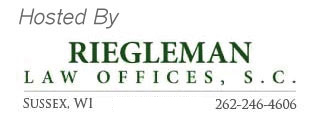After extensive work by the Wisconsin Examining Board, a new Chapter 10 of the Administrative Code became effective on August 1, 2018. This chapter of the Code broadly addresses the chiropractor’s delegation of certain patient services to Chiropractic Technicians (“CT’s”) and Chiropractic Radiological Technicians (“CRT’s”). As with any Administrative Code provisions, there are legal implications within the Code which influence the doctor’s standard of practice. There are at least five important aspects of the new Code provisions which a doctor should be particularly aware of in their practice:
- Chiropractors must maintain”records” verifying the certification of CT’s and CRT’s. Chir 10.02(1) requires that the doctor maintain records verifying that the CT is properly certified to perform “adjunctive services” or “physiotherapy treatment” provided to the patients. Similare record keeping reqirements are found in Chir chapter 4 relating to the CRT. The records must show that the CT “has successfully completed a didactic and clinical training program approved by the board and covering the performance of the delegated service.” The Code does not specify where such information can be reliably obtained, how long such records must be maintained, and from what prior period of time the “successful” completion should have been obtained.
- CT’s cannot perform “massage therapy” or “bodywork therapy” unless appropriatly licensed under Chapter 460 of the statutes. Many doctors mistakenly believe that a CT can perform massage therapy on patients even though they have not been properly licenced by the state. Even though this chapter of the administrative code labels massage therapy or bodywork therapy as forms of “physiotherapy treatment” for chiropractic patients, two sections of the code explicitly clarify that this type of service is recognized in a seperate section of the statutes and must be perfomed only by a licensed massage therapist. See Chir 10.01 (1g) and Chir 10.02(2). This must be kept in mind in the course of accurately describing care to patients and properly billing for services.
- Chiropractors must directly supervise patient services delegated to CT’s and CRT’s. The new code continues to contain provisions requiring the doctor to exercise “direct” supervision over delegated services. This language is commonly interpreted as requiring the doctor to be physically present in the office with any CT or CRT performing delegated services. This supervision requirement is also found in chapter 4 of the Code.
- Chiropractors maintain ultimate liablitly for the quality of services provided by the CT and CRT. Chir 10.02(5) states that the doctor “retains ultimate responsiblity for the manner and quality” of the CT’s and CRT’s service. This explicit provision imposes vicarious liability on the doctor and justifies the importance of documenting the viablity of patient care by these members of their staff and maintaining appropriate malpractice insurance for such conduct of others.
- Code does not explicitely prohibit delegation of defined services to other licensed professionals. Doctors have often hired other types of health care professionals; such as massage therapists, athletic trainers, dieticians, etc., to work in their offices and provide the types of services permitted under the Code to the doctor’s patients. Other than as it relates to massage therapists, described above, the new code does not prohibit this type of “delegation” to other healthcare professionals within an office and presumes that these alternative health care professionals will act within the scope of their distinct licensure while treating the doctor’s patients.

 COMMUNITY.
COMMUNITY.